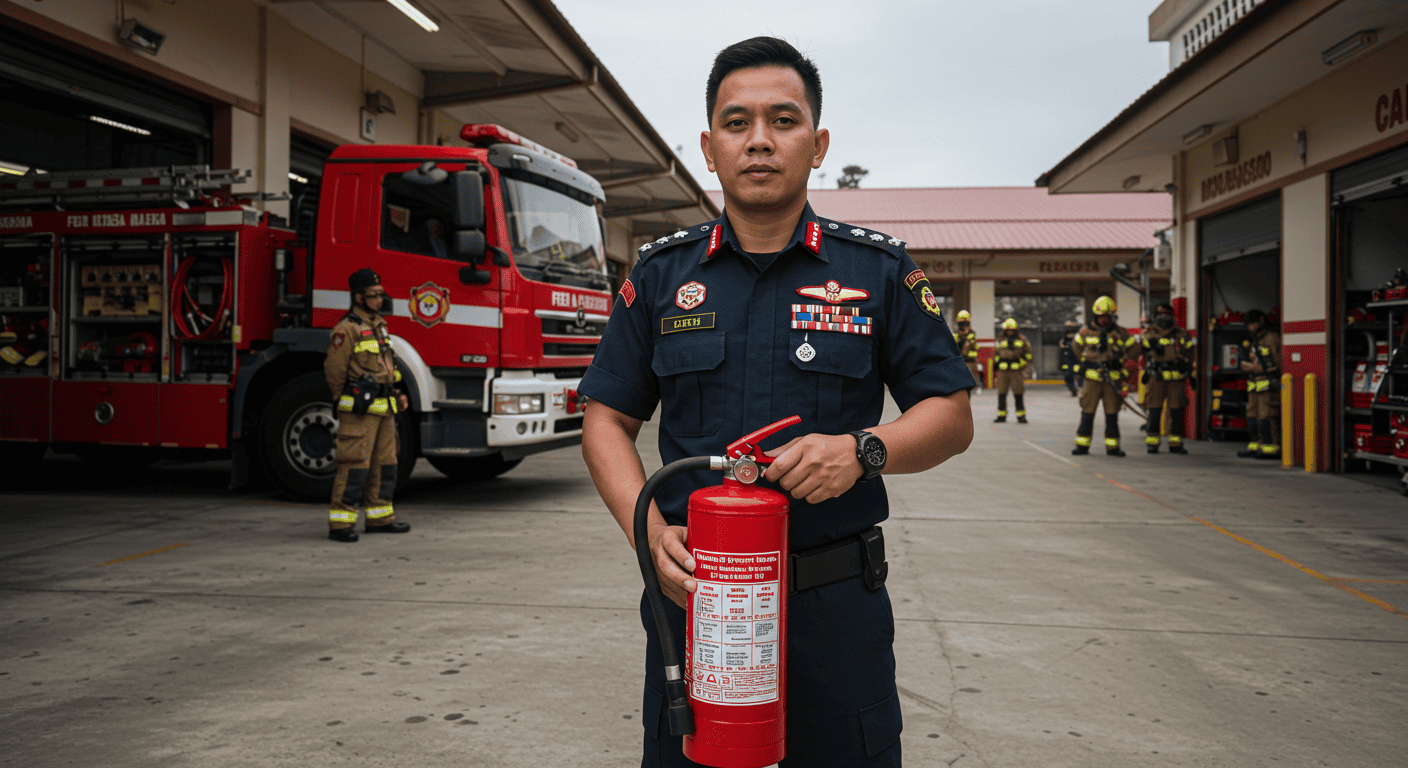Fire safety training in Malaysia focuses on developing essential fire prevention and emergency response skills in accordance with Fire and Rescue Department (BOMBA) requirements and local safety regulations. The program emphasizes practical fire safety measures while ensuring compliance with the Fire Services Act 1988 and UBBL (Uniform Building By-Laws) requirements.
Training incorporates local emergency response protocols and specific requirements for different facility types, considering Malaysian building regulations and workplace safety standards. Special attention is given to implementing comprehensive fire safety programs suitable for local workplace environments.
Fire Safety Training in Malaysia
Who Should Attend Fire Safety Training?
Emergency Response Team (ERT) members, safety and health committee members, facility managers, security personnel, and employees designated as fire wardens should attend this training. This includes staff from various sectors including commercial buildings, manufacturing facilities, and educational institutions.
The training is particularly crucial for personnel responsible for implementing fire safety programs and coordinating emergency responses in Malaysian organizations.
What Are The Core Fire Prevention Components?
Training addresses essential fire prevention elements including hazard identification, risk assessment, and implementation of preventive measures specific to Malaysian workplace settings. Participants learn about fire chemistry, classes of fire, and proper prevention strategies.
Special emphasis is placed on understanding common fire hazards in Malaysian environments and implementing effective control measures to prevent fire incidents.
How Is Emergency Response Handled?
Participants learn comprehensive emergency response procedures including evacuation protocols, firefighting techniques, and coordination with BOMBA and other emergency services. Training covers proper use of firefighting equipment and emergency communication systems.
The program emphasizes developing quick response capabilities while maintaining personnel safety during fire emergencies in Malaysian workplace contexts.
What Fire Equipment Training Is Provided?
Training covers proper use and maintenance of fire safety equipment including fire extinguishers, hose reels, fire alarm systems, and emergency lighting. Participants learn equipment inspection procedures and testing requirements according to Malaysian standards.
Special focus is given to hands-on practice with different types of firefighting equipment commonly found in Malaysian facilities.
How Is Evacuation Planning Managed?
Participants learn to develop and implement effective evacuation plans including escape route design, assembly point selection, and evacuation drill procedures. Training covers specific requirements for different building types and occupancy levels.
The program emphasizes conducting regular evacuation drills and maintaining proper documentation as required by Malaysian regulations.
What Documentation Requirements Are Covered?
Training addresses mandatory documentation including fire safety records, inspection logs, and incident reports required by Malaysian authorities. Participants learn proper record-keeping practices and reporting procedures.
Special attention is given to maintaining accurate documentation for compliance purposes and emergency response planning.
How Are Building Fire Safety Systems Addressed?
Participants learn about various building fire safety systems including detection systems, suppression systems, and passive fire protection measures required by Malaysian building codes. Training covers system maintenance and testing requirements.
The program emphasizes understanding different fire safety systems and their integration in overall building safety strategies.
What Emergency Communication Protocols Are Established?
Training covers effective emergency communication procedures including alarm activation, internal communication chains, and coordination with external emergency services. Participants learn proper protocols for different emergency scenarios.
Special focus is given to developing clear communication channels and ensuring effective coordination during fire emergencies.
How Is Fire Risk Assessment Conducted?
Participants learn comprehensive fire risk assessment methodologies specific to Malaysian workplace contexts. Training covers hazard identification, risk evaluation, and implementation of control measures.
The program emphasizes developing systematic approaches to risk assessment while considering local regulatory requirements and industry standards.
What Are The Legal Compliance Requirements?
Training addresses legal obligations under Malaysian fire safety regulations including BOMBA requirements, OSHA regulations, and industry-specific standards. Participants learn about compliance requirements and penalties for non-compliance.
Special attention is given to understanding regulatory frameworks and maintaining proper compliance documentation.
How Is Fire Safety Culture Developed?
Participants learn strategies for promoting fire safety awareness and developing a positive safety culture in Malaysian organizations. Training covers employee engagement techniques and continuous improvement approaches.
The program emphasizes building sustainable fire safety programs while considering local cultural aspects and workplace dynamics.
What Post-Incident Procedures Are Covered?
Training includes post-fire incident procedures including investigation methods, reporting requirements, and implementation of corrective actions. Participants learn proper documentation and analysis techniques for fire incidents.
Special focus is given to learning from incidents and implementing preventive measures to avoid future occurrences in Malaysian workplace settings.

